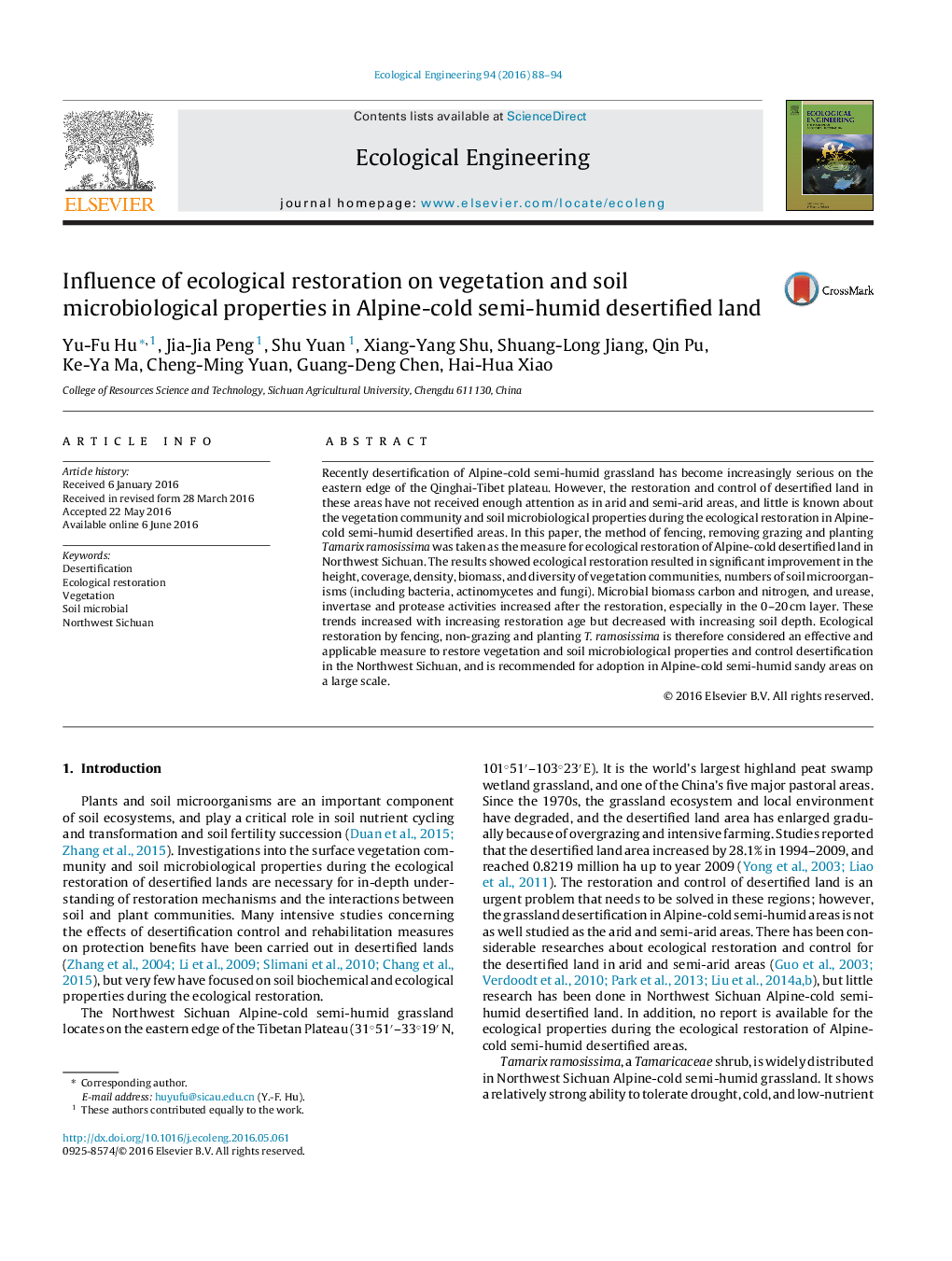| کد مقاله | کد نشریه | سال انتشار | مقاله انگلیسی | نسخه تمام متن |
|---|---|---|---|---|
| 4388535 | 1618005 | 2016 | 7 صفحه PDF | دانلود رایگان |
• Desertification of Alpine-cold semi-humid grassland has not received enough attention.
• Tamarix shrub promoted development of herbs and their diversity.
• Soil microbial biomass carbon and nitrogen and related enzyme activities increased.
• Planting Tamarix ramosissima is therefore an effective restoration method.
Recently desertification of Alpine-cold semi-humid grassland has become increasingly serious on the eastern edge of the Qinghai-Tibet plateau. However, the restoration and control of desertified land in these areas have not received enough attention as in arid and semi-arid areas, and little is known about the vegetation community and soil microbiological properties during the ecological restoration in Alpine-cold semi-humid desertified areas. In this paper, the method of fencing, removing grazing and planting Tamarix ramosissima was taken as the measure for ecological restoration of Alpine-cold desertified land in Northwest Sichuan. The results showed ecological restoration resulted in significant improvement in the height, coverage, density, biomass, and diversity of vegetation communities, numbers of soil microorganisms (including bacteria, actinomycetes and fungi). Microbial biomass carbon and nitrogen, and urease, invertase and protease activities increased after the restoration, especially in the 0–20 cm layer. These trends increased with increasing restoration age but decreased with increasing soil depth. Ecological restoration by fencing, non-grazing and planting T. ramosissima is therefore considered an effective and applicable measure to restore vegetation and soil microbiological properties and control desertification in the Northwest Sichuan, and is recommended for adoption in Alpine-cold semi-humid sandy areas on a large scale.
Journal: Ecological Engineering - Volume 94, September 2016, Pages 88–94
